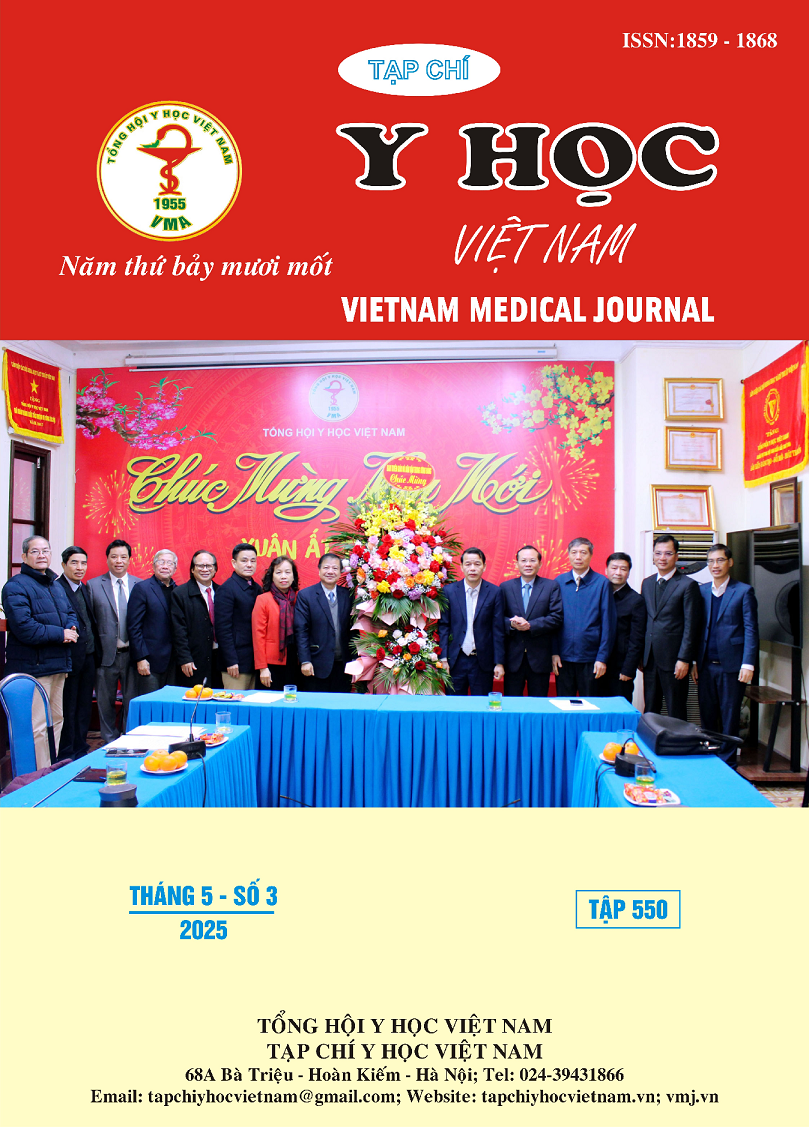ĐỘ DÀY NƯỚU VÀ BỀ RỘNG NIÊM MẠC SỪNG HOÁ CÁC RĂNG TRƯỚC HÀM DƯỚI
Nội dung chính của bài viết
Tóm tắt
Đặt vấn đề: Kiểu hình nướu và hình thái xương tạo thành kiểu hình nha chu. Trong đó kiểu hình nướu bao gồm độ dày nướu và bề rộng niêm mạc sừng hoá1. Kiểu hình nướu là một yếu tố rất quan trọng, quyết định đến sự thành công của nhiều điều trị nha khoa như implant, nha chu, chỉnh nha, phục hình. Tuy nhiên, kiểu hình nướu có giá trị rất khác nhau giữa các chủng tộc, giữa các cá thể, hay thậm chí là giữa các răng. Vì vậy, tiên lượng điều trị cũng rất khác nhau giữa các cá thể. Đặc biệt là ở hàm dưới, nơi độ dày nướu thường được cho là mỏng hơn và bề rộng niêm mạc sừng hoá biến động nhiều hơn khi so sánh với hàm trên2. Cho đến gần đây, hầu hết các nghiên cứu về kiểu hình nha chu đều thực hiện trên người da trắng. Ngược lại, những khám phá về chỉ số này ở người châu Á và đặc biệt ở Việt Nam còn hạn chế. Các nghiên cứu này được thực hiện với máy CTCB, là phương tiện có chi phí cao, chưa được sử dụng thường quy trong khám và chẩn đoán. Với những lý do nêu trên và mong muốn tạo ra một bộ cơ sở dữ liệu về đặc điểm này của mô nha chu, nhằm giúp các nhà lâm sàng đưa ra chỉ định hợp lý nhất trong thực hành hàng ngày, chúng tôi thực hiện đề tài nghiên cứu này. Trong đó, chúng tôi sẽ đánh giá hai giá trị là độ dày nướu và bề rộng niêm mạc sừng hoá nhóm răng trước hàm dưới của người Việt Nam.Phương pháp nghiên cứu: Nghiên cứu được thực hiện tại khoa Răng Hàm Mặt trường Đại học Văn Lang. Thiết kế nghiên cứu cắt ngang mô tả. Nghiên cứu được thực hiện trên 65 người Việt Nam, có đủ răng từ R33-R43. Đối tượng loại trừ bao gồm những người có viêm nha chu, đang niềng răng, tụt nướu từ R33-R43, có phục hình từ R33-R43, từng có tiền sử phẫu thuật nha chu, sử dụng thuốc làm phì đại nướu, hút thuốc. Cỡ mẫu: 65 người. Kết quả: Kết quả đo kiểu hình nướu các răng trước hàm dưới như sau:
- Tuổi và giới tính của đối tượng nghiên cứu
Tuổi £25: 56 người (86.2%); Tuổi >25: 9 người (13.8%); Nữ 33 người (50.8%), Nam 32 người (49.2%). Tỉ lệ giới tính khác biệt không có ý nghĩa.
- Độ dày nướu các nhóm răng trước hàm dưới
Nướu mỏng: 81.5%; Nướu trung bình: 15.9%; Nướu dày: 2.6%; Nướu rất dày: 0%
- Bề rộng niêm mạc sừng hóa phân theo các đặc điểm:
+ Nhóm tuổi: Tuổi £25: 3.80 ± 1.04mm; Tuổi >25: 3.89 ± 1.02 (2-7) mm
+ Giới tính: Nam: 3.81 ± 0.96mm, Nữ: 3.82 ± 1.11mm
+ Độ dày nướu: Bề rộng niêm mạc sừng hóa ở người có độ dày nướu dày là 3.00 ± 0.82mm nhỏ hơn so với độ dày nướu mỏng là 3.83 ± 1.05mm và độ dày nướu trung bình là 3.84 ± 0.93mm
- Bề rộng niêm mạc sừng hoá các nhóm răng trước hàm dưới. Các răng trước hàm dưới là 3.81 ± 1.04 mm; Răng nanh 3.95 ± 1.06 mm; Răng cửa bên 3.80 ± 1.01 mm; Răng cửa giữa 3.69 ± 1.03 mm, Không có sự khác biệt có ý nghĩa về bề rộng niêm mạc sừng hoá giữa các nhóm răng trước hàm dưới (p = 0.140). Kết luận: Những kết quả này cho thấy tầm quan trọng của kiểu hình nướu trong việc lập kế hoạch điều trị trong thực hành nha khoa hằng ngày. Cần có thêm các nghiên cứu đa dạng về kiểu hình nướu trên các nhóm dân số khác nhau để hiểu rõ hơn về kiểu hình nướu và sự khác biệt giữa các nhóm răng.
Chi tiết bài viết
Tài liệu tham khảo
2. Rijal, A. H., Dhami, B., Khapung, A. & Ghimire, P. Evaluation of Width and Thickness of the Attached Gingiva and Its Association with Age, Gender, and Arch Location in the Nepalese Population. Sci. World J. 2023, 8877273 (2023).
3. Kim, D. M., Bassir, S. H. & Nguyen, T. T. Effect of gingival phenotype on the maintenance of periodontal health: An American Academy of Periodontology best evidence review. J. Periodontol. 91, 311–338 (2020).
4. Bertl, K. et al. Are colored periodontal probes reliable to classify the gingival phenotype in terms of gingival thickness? J. Periodontol. 93, 412–422 (2022).7. COLORVUE BIOTYPE PROBES. HuFriedyGroup https://www.hufriedygroup.com/ en/biotype (2022).
5. Guglielmoni, P., Promsudthi, A., Tatakis, D. N. & Trombelli, L. Intra- and inter-examiner reproducibility in keratinized tissue width assessment with 3 methods for mucogingival junction determination. J. Periodontol. 72, 134–139 (2001).
6. Lee, W. Z., Ong, M. M. A. & Yeo, A. B.-K. Gingival profiles in a select Asian cohort: A pilot study. J. Investig. Clin. Dent. 9, (2018).
7. Shao, Y. et al. Assessment of Periodontal Biotype in a Young Chinese Population using Different Measurement Methods. Sci. Rep. 8, 11212 (2018).


